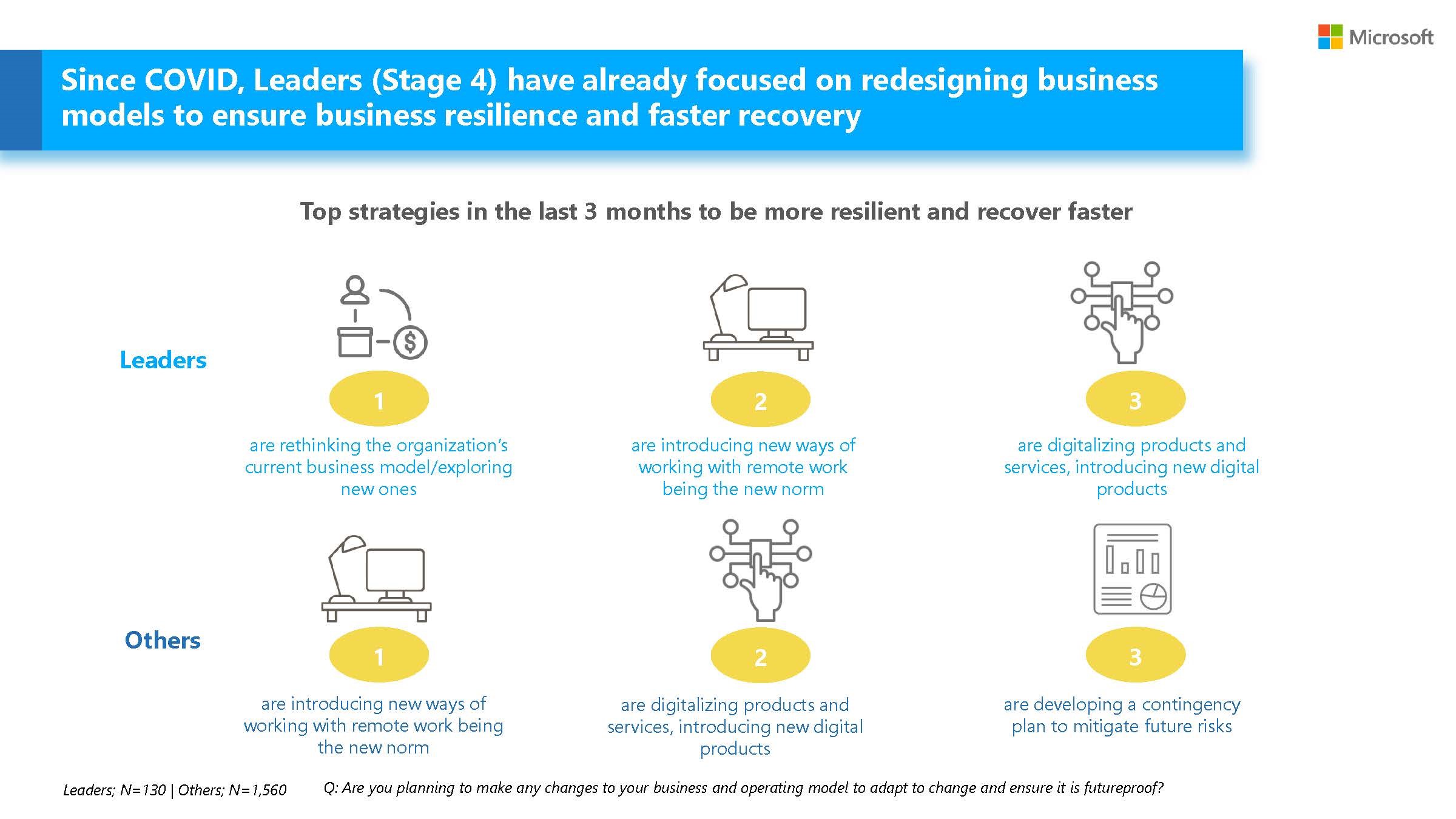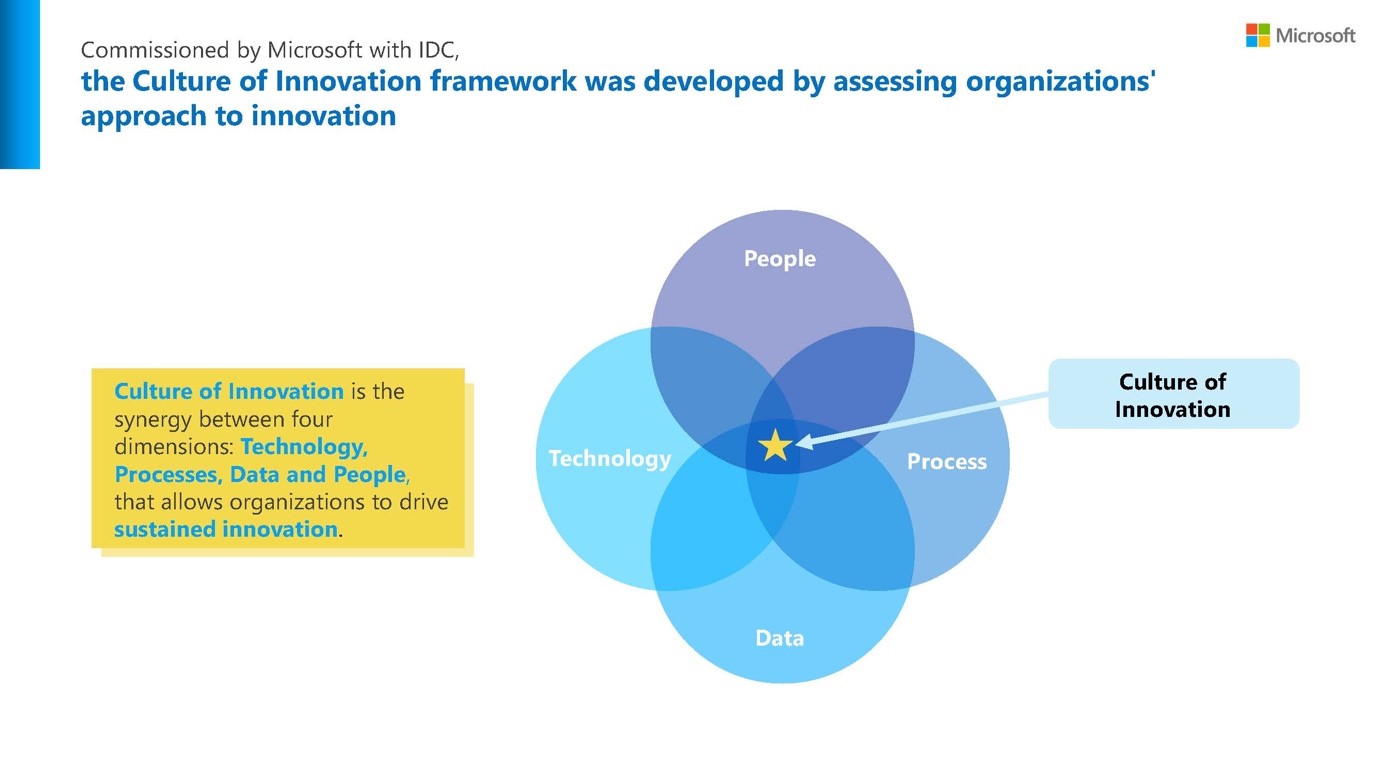
When a crisis becomes an opportunity
A culture of innovation fuels business resilience and economic recovery
In times of crisis, innovation becomes a necessity. And history tells us that humankind often ends up in a better place.
A cholera pandemic in 19th century London led to the creation of a new scientific field, epidemiology. The challenge of decrypting enemy messages during World War II spurred the development of computers.
With the current pandemic, it’s not surprising to see a similar process of innovation. Since COVID-19 hit the global economy, “we have witnessed firsthand how a wave of transformative change has swept across the region,” says Ahmed Mazhari, president of Microsoft Asia. “This is no easy feat; organizations have challenges to overcome and innovation is no longer a luxury. It has to form the core part of an organization’s DNA.”
Many others in the business world agree.
A new Microsoft-IDC study, Culture of Innovation, Foundation for business resilience and economic recovery in Asia Pacific (APAC) shows that 41% of businesses view COVID-19 as an opportunity. Those businesses also expect to recover more quickly and come out of the crisis with similar or better revenue than before.
Innovation helps
However, let’s not paint an overly rosy a picture. COVID-19 is taking a devastating toll on human life, and the resulting economic downturn has seen many people lose their jobs or suffer reduced incomes.
In the face of this disruption, people and companies are doing their best to keep going. In Asia Pacific , organizations that are adapting have increased their ability to innovate in the past six months. What’s more, as they embrace change, they are finding it easier to innovate.
Not all organizations are progressing equally, but there are many things we can learn from those leading the way.
Understanding the culture of innovation
The study includes a culture of innovation framework, which describes an interplay of people, process, data and technology to assess how an organization approaches innovation.
It also identifies four stages along the journey to a mature culture of innovation: traditionalist, novice, adopter and leader. Additionally, it provides guidance to help organizations become leaders, so they can respond to challenges and recover faster.
What do leaders have in common?
Almost all (98%) of the organizations identified as leaders, with the most advanced culture of innovation, share a belief that innovation is key to responding quickly to market challenges and opportunities. These leaders are more resilient to crises like the current pandemic and they expect to recover faster.
This resilience shapes their perception of business outcomes. Around 50% of those organizations identified as leaders reported an expected increase in overall revenue when asked what impact they think COVID-19 will have on their overall business in 2020.
Leaders also recognize the importance of digital transformation and are accelerating the pace of digitalization in response to the crisis. Eighty-seven percent intend to speed up initiatives, such as launching digital products, digital payments, ecommerce and automation. Only 66% of other organizations intend to do similarly.
Beyond digital products, services and processes, leaders understand the urgency of redesigning their overall business models. Indeed, leaders have already rethought their current business models and are exploring new ones to ensure business resilience and faster recovery.
Perhaps the most striking feature of the leaders is their approach to future planning. Leaders are looking to future-proof their businesses by focusing on technological and people capabilities. This attitude appears years ahead of other organizations that are still working on digitalization. Leading organizations know that people are the key ingredient and that empowering them to use technology successfully is the challenge of the future.
People are key
Mazhari puts it this way: “The current crisis has shown us how much business continuity and our future success depend on people, who need to be fully ready to embrace the digital reality, together with technology. While important, technology on its own will not make a difference. It is people’s capabilities and skills that allow organizations to innovate and transform.”
Leading organization share certain best practices that everyone can implement.
Eighty-nine percent have developed a culture promoting disruptive ideas and encouraging innovation as a corporate value. Eighty-two percent prioritize and formalize innovation rewards over traditional performance and hire a diverse cross-industry, multicultural and multigenerational workforce. And 70% invest in growing enterprise-wide capabilities and skilling initiatives.
This openness helps to unlock the potential of people to accelerate transformation.
Resilience and recovery
When the people of an organization have fully embraced the concept of a culture of innovation, the other elements of technology, data and process fall into place. Leading organizations overwhelmingly (92%) invest in disruptive technologies to drive innovation and business transformation.
Leading organizations overwhelmingly (92%) invest in disruptive technologies to drive innovation and business transformation.
Leaders are also more systematic in their approach. They develop specific processes to drive innovation. They also have dedicated budgets to drive their digital innovation and programs.
They also understand the importance of leveraging data to differentiate and enhance
their products and services. Additionally, they make decisions to enable enterprise-wide collaboration and knowledge sharing.
This combination of tech adoption and tech capability is known as tech intensity. “Now, with every organization becoming a digital one, achieving the success in transformation requires both the adoption of tools and technologies as well as their own digital capabilities,” Mazhari says. “Culture that encourages innovation and embraces digital opportunities is critical as it prepares the workforce and organizations for current and future challenges.”
The study lays out four steps that any organization can follow:
- Fortify resilience with technology
- Invest in people’s capabilities and skills
- Leverage data to increase competitiveness
- Redesign processes to empower people to continuously drive innovation
Mazhari reiterates that the culture of innovation is achieved through the critical combination of technology and employee empowerment.
“To succeed in the new normal and drive digital transformation, we not only need to have a robust digital foundation, we also need to ensure our people have the skills and tools to work together to drive disruption. Ultimately, we want to ensure a more resilient and inclusive future for all organizations. At Microsoft, we are committed to working with organizations in Asia Pacific to make this happen, together.”














